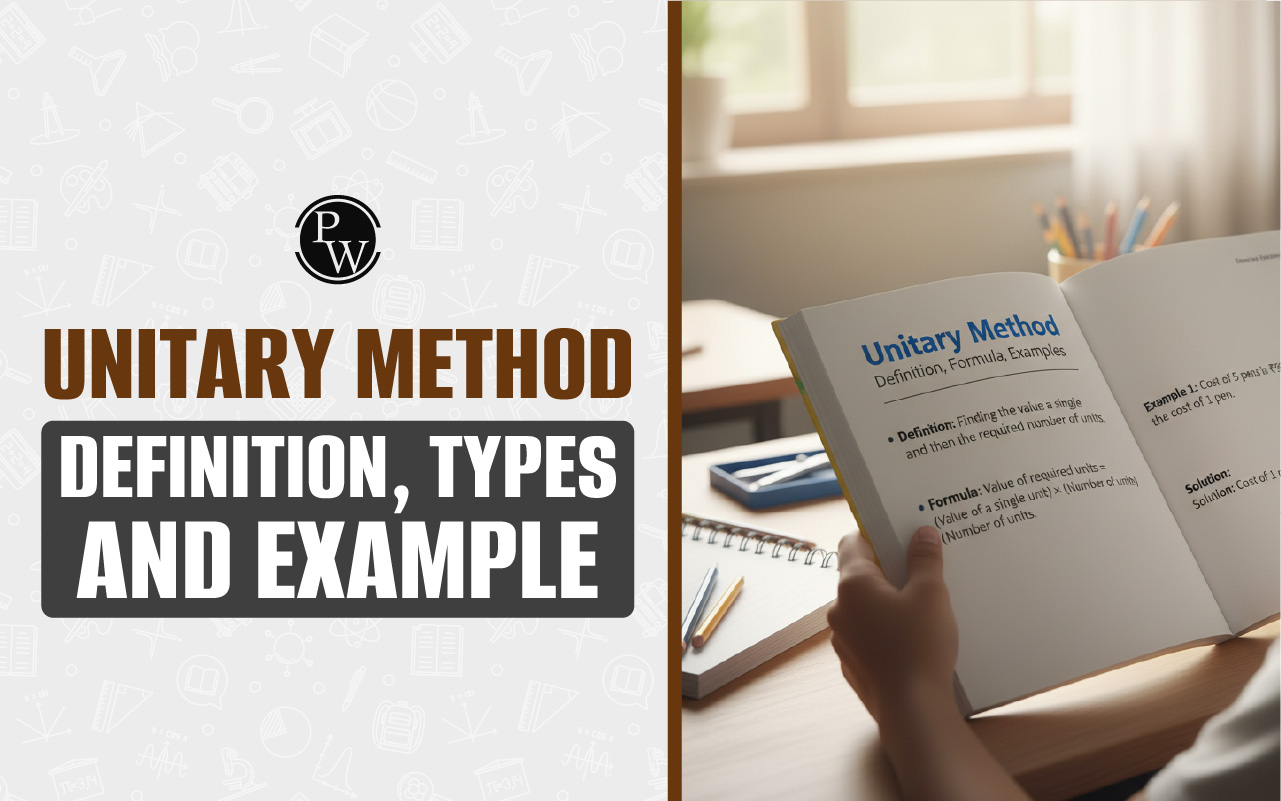
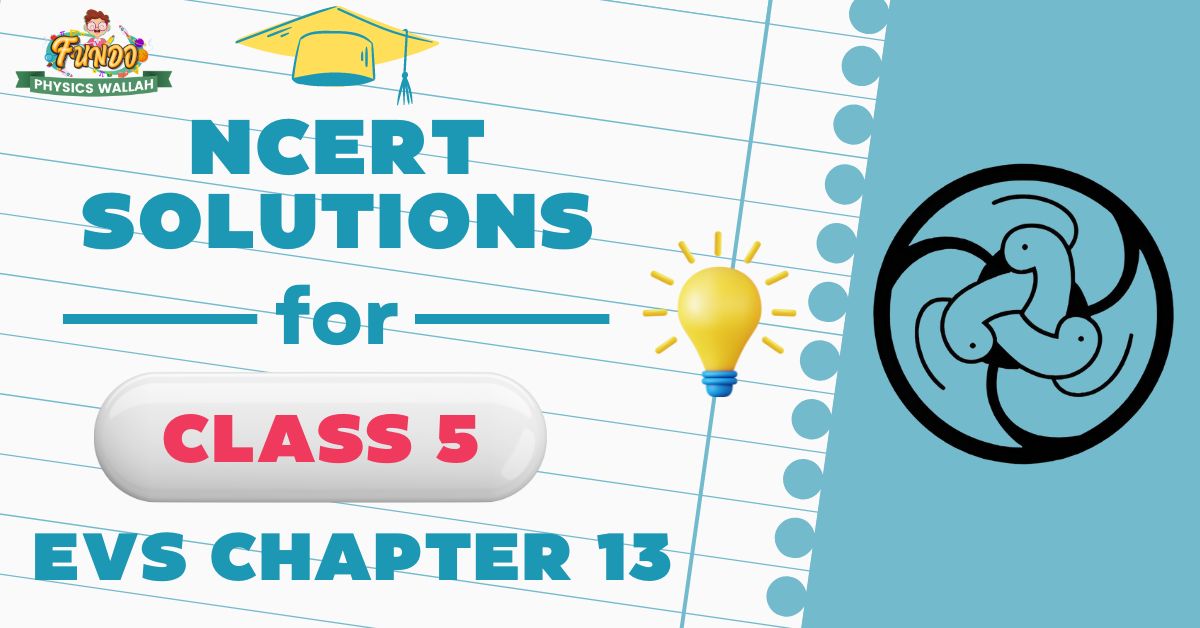
NCERT Solutions for Class 5 EVS Chapter 13
NCERT Solutions for Class 5 EVS Chapter 13 : Discover the diversity of India's shelters in 'A Shelter So High' from Class 5 EVS, designed to captivate students with a variety of homes tailored to India’s geography. Through Physics Wallah's straightforward solutions, students explore the ingenious adaptations of dwellings to different climates and terrains. Engaging with the NCERT Class 5 book's detailed exploration of shelters is vital for students aiming for top marks. Physics Wallah provides comprehensive NCERT Solutions for Class 5 EVS Chapter 13, perfectly in sync with the CBSE standards, guiding students in their academic journey and sparking a love for the architectural wisdom that shapes our living spaces.NCERT Solutions for Class 5 EVS Chapter 13 Overview
Journey through the diverse landscapes of India with Physics Wallah's NCERT Solutions for Class 5 EVS Chapter 13. This chapter unveils the unique and ingenious shelters adapted to various environmental conditions across India, providing rich insights for curious learners. Each part of the chapter is thoroughly explained, with vivid illustrations that highlight the adaptability and creativity behind different types of homes, enriching students' understanding of India's cultural and geographical diversity. Physics Wallah turns learning into an exciting adventure, making every element of EVS a hands-on educational journey. Chapter 13 guides students through the myriad of shelters found in India, prompting them to engage with the concept of adaptation and resilience in architecture. Head over to PW's official website for full access to the NCERT Solutions for Class 5 EVS Chapter 13, designed for easy comprehension and in-depth exploration. Immerse yourself in the chapter, reinforce your learning with engaging activities, and tap into chat support for instant help and academic growth.Related Links -
NCERT Solutions for Class 5 EVS Chapter 13 A Shelter So High
Dive into the world of diverse habitats with NCERT Solutions for Class 5 EVS Chapter 13 'A Shelter So High'. Unveiling the secrets of various types of shelters across India's vast landscapes, these solutions provide Class 5 students a glimpse into the ingenuity of architectural adaptations to different climates. Every question from the Chapter 13 exercises is comprehensively resolved, facilitating both academic learning and exam readiness. Developed by seasoned educational professionals, the solutions are straightforward, precise, and trustworthy, offering an engaging and insightful learning journey for every aspiring geographer.NCERT Solutions for Class 5 EVS Chapter 13 Page no: 121
Find out: Q1. Check in your map. Which states would one pass through while travelling from Mumbai to Kashmir? Ans: We go through Maharashtra, Gujarat, Rajasthan, Madhya Pradesh, Haryana, Punjab, Himachal Pradesh, and Jammu & Kashmir. Q2. Gaurav Jani passed through several states while going from Mumbai to Delhi. Find the capital cities of these states. Was there any other big town on his way? Ans: From Mumbai to Delhi, he'd pass Maharashtra (Mumbai), Gujarat (Gandhinagar), Rajasthan (Jaipur), and Haryana (Chandigarh), visiting big cities like Ahmedabad and Jaipur. Q3. Is Manali a plain or a hilly area? In which state is it? Ans: Manali is in the mountains of Himachal Pradesh.NCERT Solutions for Class 5 EVS Chapter 13 Page no: 122
Tell: Q1. Have you ever stayed in a tent? Where? What was it like? Ans: I camped in a tent in Manali, and it was super exciting. Q2. Imagine that you were to stay alone in a small tent for two days and could take with you only ten things. Make a list of those ten things. Ans: I'd bring blankets, clothes, snacks, bug spray, water, a safety kit, a first-aid kit, a camera, a flashlight, warm clothes, and shoes. Q3. What are the different types of houses that you have seen? Tell your friends about it. Make drawings too. Ans: I've seen caves, big castles, tall buildings, houses, and even homes on wheels. Caves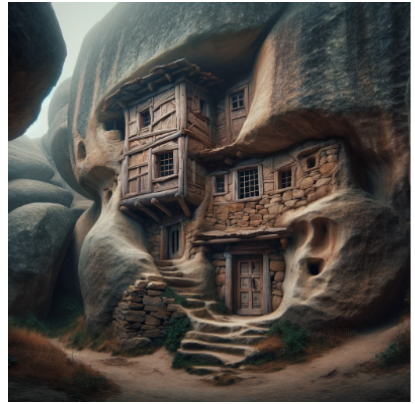 House on Wheels
House on Wheels
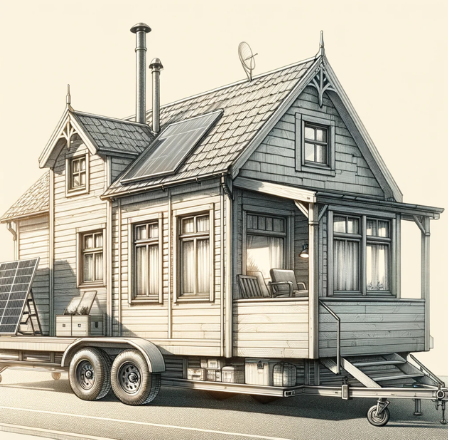 Buildings
Buildings

NCERT Solutions for Class 5 EVS Chapter 13 Page no: 123
Write: Q1. During winters, Tashi and his family live on the ground floor. Why would they be doing so? Ans: Tashi's family stays downstairs in winter because it's warmer, especially since there are no windows to let the cold in. Q2. What is the roof of your house like? What all is the roof used for? Ans: Our roof is flat and great for drying clothes and sleeping under the stars in summer.NCERT Solutions for Class 5 EVS Chapter 13 Page no: 124
Find out: Q1. At what height is the place where you live? Ans: My home is 450 meters above sea level. Q2. Why did Gaurav Jani say - “This place is so high that it is difficult to breathe normally?” Ans: At high places, the air is thin, making it tough to breathe. Q3. Have you ever been to a hilly place? Where? Ans: I've been to the mountains in Himachal Pradesh. Q4. At what height was it? Did you have any difficulty in breathing there? Ans: It was about 2000 metres from the sea level. Yes, at this height breathing becomes difficult. Q5. Which is the highest place you have been to? Ans: The highest place I've visited is Nainital, which is around 2,084 meters above sea level. It's high up and the view is amazing!NCERT Solutions for Class 5 EVS Chapter 13 Page no: 127
The Changpa: Q1. For the Changpas their animals are a very important part of their life. Is any animal part of your life? For example, as a pet, or as helpers in farming. Ans: My pet cat is very important to me. Q2. List five ways in which different animals are a part of your life. Ans:- Milk from Cows.
- Eggs from Chickens.
- Pet Dog that keeps our home safe.
- Wool from Sheep.
- Honey from Bees.
NCERT Solutions for Class 5 EVS Chapter 13 Page no: 129
Tell: The houses in different parts of Jammu and Kashmir are made to suit the climate and the needs of the people there. Q1. Are there different types of houses in the place where you live? If yes, think about the reasons. Ans: Different homes are made to match the weather and people's needs there. Around me, there are all sorts of homes, from big mansions to simple huts, based on what people can afford. Q2. Think of your own house. Is there something special in it – like a sloping roof as it rains a lot, or a courtyard where you can sleep when it is hot or where things are kept in the sun (for drying, etc.)? Make a drawing. Ans: My house has a sloped roof for the rain and a yard for drying stuff.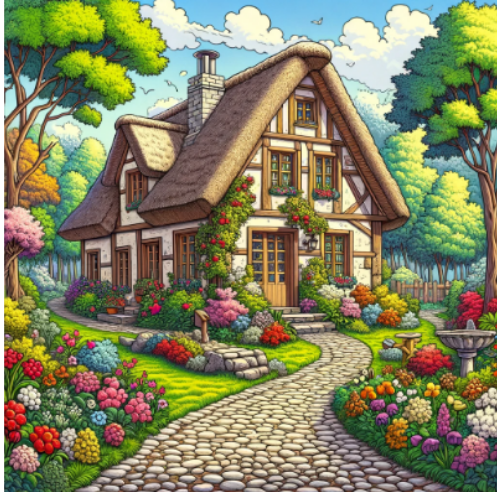 Q2. What are the materials used for making your house? Is it mud, brick, stone, wood or cement?
Ans:
We used bricks, cement, glass, wood, and stones to build our house.
Q2. What are the materials used for making your house? Is it mud, brick, stone, wood or cement?
Ans:
We used bricks, cement, glass, wood, and stones to build our house.
NCERT Solutions for Class 5 EVS Chapter 13 Page no: 130
Discuss and write: Q1. Can you guess the similarities and differences in the life of Bakarwal people and the life of the Changpas. Ans: Similarities:- Both communities reside in the mountainous regions of Jammu and Kashmir.
- Their lifestyle involves nomadic movement from one location to another.
- Their income comes from selling animal fur.
- Their diet includes meat from animals like sheep, yaks, and goats.
Differences:
- Bakarwal people herd different kinds of goats and sheep in various areas, usually at lower elevations.
- Conversely, Changpas herd specific goat breeds in higher regions because of their exceptionally soft wool, which is highly valuable. They are known to live in higher altitude areas.
Importance of NCERT Solutions for Class 5 EVS Chapter 13
Chapter 13 of Class 5 EVS, 'A Shelter So High', escorts students on a captivating journey through the diversity of shelters adapted to India's varied geographical features. It delves into the architectural innovations and cultural stories behind different types of houses, illustrating how humans adapt to their environments. The NCERT solutions for this chapter are vital for fostering a comprehensive grasp of environmental science. Crafted by educational specialists, these resources guide students through the intricate world of shelters, breaking down complex concepts with precision and attention to detail. More than just delivering correct answers, these solutions enrich students’ understanding of environmental adaptation. They link textbook content with real-world examples, encouraging critical thinking and a profound respect for our adaptability and ingenuity. Engaging with these detailed solutions enables students to view shelters not just as physical structures, but as reflections of human resilience and creativity, and to acknowledge their significance in our interaction with the natural world.Benefits of NCERT Solutions for Class 5 EVS Chapter 13
NCERT Solutions for Class 5 EVS Chapter 13, "A Shelter So High," offer essential guidance for students delving into the adaptive architecture of shelters across different terrains in India. Here’s why these solutions are advantageous:- Exploration of Living Environments : This chapter takes students on a journey to understand how diverse shelters are designed to suit various environmental conditions, providing key insights into human adaptability and ingenuity.
- Understanding of Adaptation : Through detailed examination of different types of shelters, from mountainous abodes to coastal homes, these solutions expand students' knowledge of how communities thrive in harmony with nature.
- Enhancement of Analytical Skills : By analyzing the reasons behind the construction of various shelters, students develop their ability to think critically about human-environment interactions.
- Boost in Exam Confidence : Equipped with thorough answers, students gain the confidence to tackle exam questions effectively, enhancing their academic performance.
- Stimulation of Inquisitiveness : The solutions clarify complex topics, encouraging students to further explore the fascinating subject of environmental science and the diversity of human shelters.
- Interactive Learning Experience : With vivid descriptions and relatable examples, the solutions transform the study of shelters into an engaging exploration for young minds.
- Compliance with Educational Objectives : Aligned with the CBSE curriculum, these solutions ensure that students not only adhere to academic standards but also deepen their appreciation for the innovative ways humans adapt to their surroundings.
NCERT Solutions For Class 5 EVS Chapter 13 FAQs
What does 'A Shelter So High' reveal to us?
This chapter uncovers the diverse types of shelters used across India, showing how they're adapted to different climates and landscapes, and what this tells us about human ingenuity and environmental adaptation.
Why is learning about different types of shelters important?
Understanding the variety of shelters people live in across different regions helps us appreciate human resourcefulness and the relationship between communities and their natural environments.
How does studying various shelters enhance student learning?
Exploring various shelters broadens students' understanding of geography, culture, and environmental science, building a deeper connection to the world and its people.
What activities can deepen knowledge about diverse shelters?
Hands-on projects like constructing mini models of different shelters, researching various living environments, and comparing shelters from around the world can enrich students' learning experiences.
Why is it significant to examine different shelters in environmental studies?
Examining different shelters is key in environmental studies because it illustrates how humans adapt to their surroundings using sustainable methods, and the importance of designing homes that harmonize with nature.
Talk to a counsellorHave doubts? Our support team will be happy to assist you!

Free Learning Resources
PW Books
Notes (Class 10-12)
PW Study Materials
Notes (Class 6-9)
Ncert Solutions
Govt Exams
Class 6th to 12th Online Courses
Govt Job Exams Courses
UPSC Coaching
Defence Exam Coaching
Gate Exam Coaching
Other Exams
Know about Physics Wallah
Physics Wallah is an Indian edtech platform that provides accessible & comprehensive learning experiences to students from Class 6th to postgraduate level. We also provide extensive NCERT solutions, sample paper, NEET, JEE Mains, BITSAT previous year papers & more such resources to students. Physics Wallah also caters to over 3.5 million registered students and over 78 lakh+ Youtube subscribers with 4.8 rating on its app.
We Stand Out because
We provide students with intensive courses with India’s qualified & experienced faculties & mentors. PW strives to make the learning experience comprehensive and accessible for students of all sections of society. We believe in empowering every single student who couldn't dream of a good career in engineering and medical field earlier.
Our Key Focus Areas
Physics Wallah's main focus is to make the learning experience as economical as possible for all students. With our affordable courses like Lakshya, Udaan and Arjuna and many others, we have been able to provide a platform for lakhs of aspirants. From providing Chemistry, Maths, Physics formula to giving e-books of eminent authors like RD Sharma, RS Aggarwal and Lakhmir Singh, PW focuses on every single student's need for preparation.
What Makes Us Different
Physics Wallah strives to develop a comprehensive pedagogical structure for students, where they get a state-of-the-art learning experience with study material and resources. Apart from catering students preparing for JEE Mains and NEET, PW also provides study material for each state board like Uttar Pradesh, Bihar, and others
Copyright © 2025 Physicswallah Limited All rights reserved.





